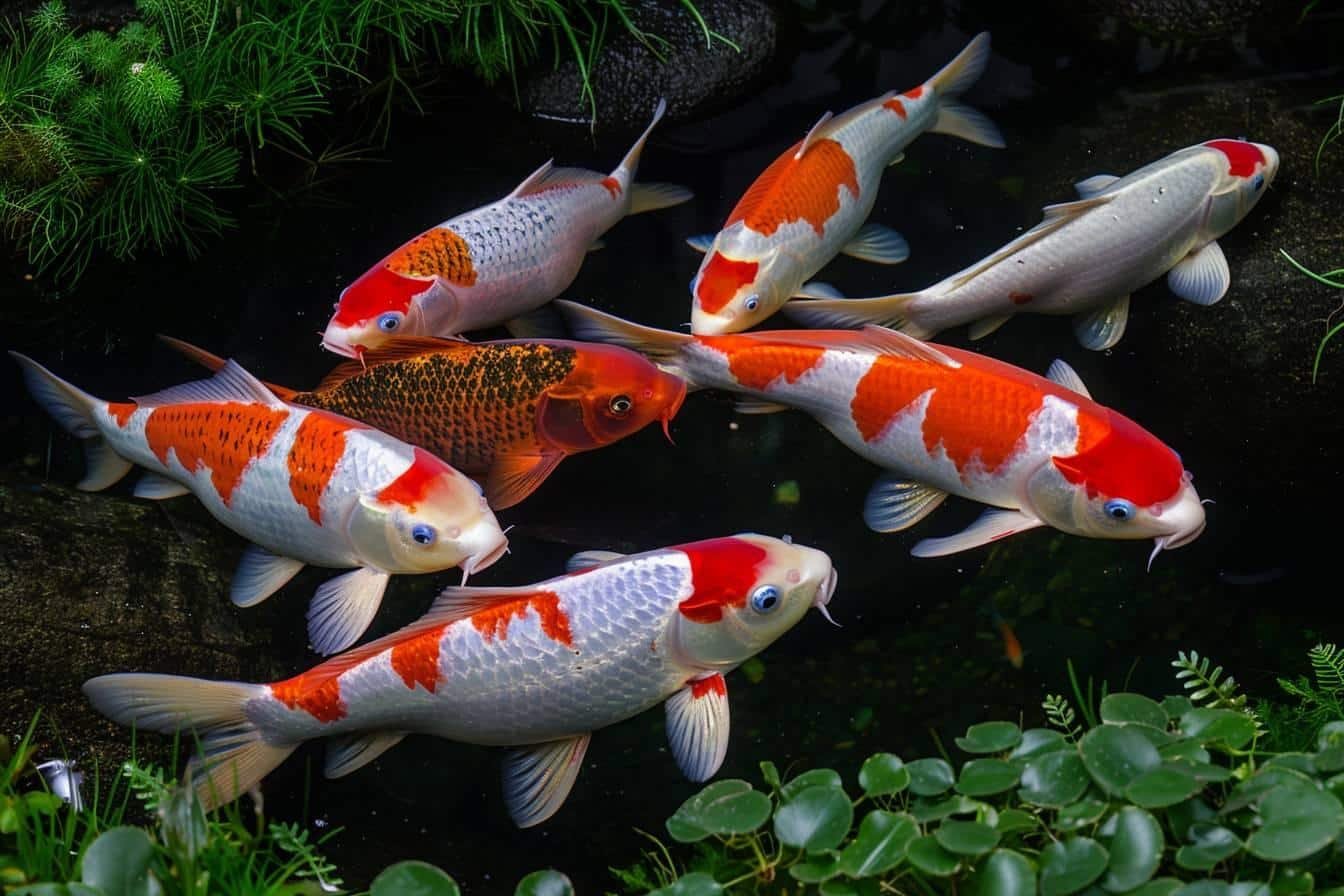Le kohaku fish is a captivating variety of Japanese Koi carp that is attracting the attention of aquarium enthusiasts the world over. With its pristine white body and bright red spots, this ornamental fish brings a touch of elegance and serenity to any pond or aquarium. As a pet shop floor manager, I've had the opportunity to get up close and personal with these magnificent creatures and discover their unique characteristics. In this post, we'll explore in detail the kohaku's special features, its care requirements and some interesting anecdotes about this star of Japanese ponds.
Characteristics and origins of kohaku fish
A fish with emblematic colours
Le kohaku fish is distinguished by its immaculate white coat adorned with bright red patterns. These spots, known as 'hi', can vary in size, shape and arrangement, making each specimen unique. I've always been fascinated by the diversity of patterns you can see in these fish. Some have well-defined spots, others more complex patterns that extend over the whole body.
A popular Japanese variety
Originally from Japan, kohaku is one of the oldest and most popular varieties of koi. Its name means "red and white" in Japanese, which perfectly describes its appearance. Japanese breeders, true artists, have perfected this variety over the generations to produce specimens of exceptional beauty.
Various sizes and ages
Kohaku are available in a variety of sizes, generally ranging from 27 cm to 48 cm for adult specimens. The age of the fish also varies, with individuals of 2 years (nisai) or 3 years (sansai) commonly on offer. I've noticed that the most passionate fans often look for older specimens, as they have already developed their characteristic patterns.
Care and maintenance of kohaku fish
Optimal living conditions
To ensure your kohaku's well-being, it's vital to provide it with the right environment. Here are the main points to bear in mind:
- pH: between 7.0 and 8.0
- Hardness: 10 to 30 GH
- Temperature: 16° to 28°C
- Minimum recommended volume: 200 litres
These fish are gregarious and like to live in groups. I always recommend that my customers provide a tank large enough to accommodate several individuals. Did you know that create a koi pond can be an exciting and rewarding project?
Balanced diet
Kohaku are omnivorous fish that accept a wide variety of foods. Their diet can include :
| Type of food | Frequency |
|---|---|
| Living food | 2-3 times a week |
| Frozen food | 2-3 times a week |
| Sequins | Daily |
| Freeze-dried foods | 1-2 times a week |
A varied diet is essential to maintain the health and beautiful colours of your kohaku. I remember one customer who managed to intensify the red colour of his fish thanks to a diet rich in carotenoids. It was impressive!
Reproduction and breeding
Breeding kohaku is a delicate process that requires specific knowledge. Experienced breeders carefully select broodstock based on their characteristics to obtain quality offspring. The sex of the fish can be determined from a certain age, although some specimens remain undetermined.
Top-quality kohaku are often rated 3 to 4 stars by experts. Some particular specimens, such as doitsu (without scales) or ginrin (shiny scales), are particularly sought after by collectors.

Kohaku, an exceptional fish
Over the years spent looking after these magnificent creatures, I've developed a real attachment to kohaku. Their natural elegance and peaceful temperament make them ideal inhabitants of ornamental ponds. Whether you're a beginner or a seasoned enthusiast, these fish will win you over with their beauty and soothing presence.
Let's not forget that each kohaku is unique, with its own patterns and personality. That's what makes the experience of raising them so rewarding. So, if you're thinking of adding these splendid carp to your collection, don't hesitate to embark on this wonderful aquatic adventure!
External sources :
wiki aquaculture
wiki fish farming
